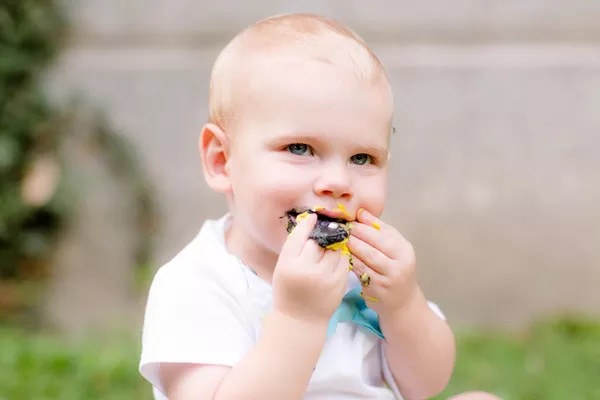The world through an infant’s eyes is a captivating journey of discovery. As newborns grow and develop, their visual abilities expand, enabling them to explore their surroundings with increasing clarity. At 2 months of age, infants exhibit remarkable progress in their visual perception. In this article, we delve into the fascinating topic of how far an infant can see at this crucial stage of their visual development.
Visual Development Milestones
Understanding an infant’s visual capabilities requires an understanding of the milestones they typically reach during their first few months of life. At birth, a newborn’s visual system is still immature, and their eyesight is limited. However, as they grow and interact with the world around them, their visual acuity gradually improves.
During the first few weeks, infants develop basic visual skills such as the ability to focus their eyes and track moving objects. By two months, their vision has significantly evolved, allowing them to perceive details, explore colors, and identify faces.
Visual Acuity at 2 Months
At two months of age, infants’ visual acuity has advanced to the point where they can focus on objects located around 8 to 15 inches away from their face. This distance coincides with the typical range between their eyes and their parents‘ faces during bonding interactions. Consequently, infants at this age find comfort in observing and engaging with their caregivers’ facial expressions, further nurturing their emotional development.
The visual acuity of a 2-month-old is estimated to be around 20/80 to 20/100. This means that objects that a person with normal vision can see clearly at a distance of 80 to 100 feet, an infant at two months can only see when they are about 20 feet away. However, it is important to note that visual acuity can vary among infants, and these estimations serve as general guidelines.
Contrasting Colors and Visual Preferences
While infants at two months may not yet perceive colors as vividly as adults do, they can distinguish between contrasting colors. Research suggests that newborns have a preference for high-contrast visual stimuli, such as black and white patterns. This preference stems from the fact that infants’ visual systems are more sensitive to high-contrast images in the early stages of development.
As their visual system continues to mature, infants become more adept at perceiving a broader spectrum of colors. By two months, they can differentiate between primary colors such as red, blue, and green, although their perception may still lack the richness and depth that adults experience.
Tracking Movements and Depth Perception
At two months, infants’ ability to track moving objects significantly improves. They can follow a moving object with their eyes horizontally and vertically, demonstrating smoother eye movements compared to their early weeks. This enhanced tracking ability is crucial for their developing motor skills and coordination.
Depth perception, the ability to perceive objects in three dimensions, also undergoes significant progress at two months. Infants start to gain a rudimentary sense of depth, which aids them in distinguishing objects and understanding spatial relationships. This newfound depth perception encourages their exploration of the world, as they become more aware of their surroundings.
Visual Stimulation and Brain Development
Visual stimulation plays a vital role in an infant’s overall cognitive and brain development. By providing babies with visually stimulating environments, we can foster the growth of neural connections and enhance their visual processing skills. The use of toys, mobiles, and colorful objects within a safe distance helps promote visual tracking, attention, and engagement.
The Role of Early Intervention
Understanding the typical visual milestones of infants can aid in early identification of potential visual impairments or developmental delays. If parents or caregivers notice any concerns regarding their child’s visual development, seeking professional evaluation and intervention can be beneficial. Early intervention can address any underlying issues and optimize the child’s visual potential.
Conclusion
At two months, infants have come a long way in their visual development journey. Their visual acuity has improved, allowing them to focus on objects around 8 to 15 inches away. They can perceive contrasting colors, track movements, and develop a basic sense of depth perception. As parents and caregivers, providing visually stimulating environments and seeking early intervention when necessary can promote healthy visual development in infants. Understanding the remarkable progress made by infants in their first two months helps us appreciate the wonders of their visual exploration and provides a foundation for supporting their continued growth and learning.


